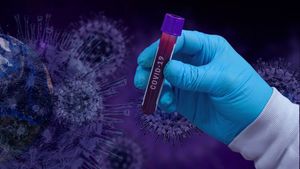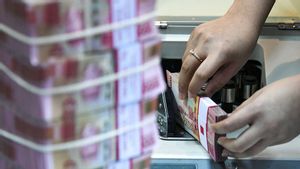JAKARTA - The production of domestic medical devices (alkes) only controls 31 percent of the total market in the country. This condition makes medical equipment investment in the country still attractive in the future. In fact, the market value of medical devices has continued to increase since 2016 until now.
President Director of PT Indofarma Tbk Arief Pramuhanto said the market value of medical devices in Indonesia in 2020 increased to Rp84.59 trillion. Meanwhile, in 2016 the figure only reached Rp65.9 trillion.
"So from 2016 to 2020, the growth is quite good from Rp65.9 trillion to Rp84.59 trillion," he said in a virtual discussion, Thursday, July 15.
However, said Arief, this positive trend is a contribution from the high public demand for medical device products, especially those related to the COVID-19 pandemic.
"If the experience in 2020 began with the pandemic, the bed occupancy rate in normal non-COVID-19 hospitals fell by around 65-70 percent. As a result, the demand for drugs fell at that time. Only if pharmaceutical products related to COVID-19 increased significantly. normal," he said.
Meanwhile, said Arief, there is also inequality in terms of medical equipment. This is because the contribution of domestic products is far less than the value of imports.
"In terms of medical devices, there is an imbalance here. Imports are Rp12.5 trillion. Then, domestic products are only Rp2.9 trillion. So imports of medical devices are five times greater than spending on domestic medical devices," he explained.
Reflecting on this condition, Arief assessed that the import of medical devices is still a challenge so that it can be reduced to a minimum at the level of substitution. He said, this step needs to be done so that Indonesia does not depend on imports.
"This is a challenge for us, especially for these medical devices, we can at least become a minimum import substitution first. We don't have to think too far first, at least we can make the same product so we can make substitutions," he said.
Of the 496 types of medical devices that were transacted in the catalog in 2019-2020, 152 types of medical devices were able to be produced domestically. This amount is equivalent to 31 percent of medical devices from the total available.
"The remaining 69 percent are imported. This is a challenge for all of us. Because I said earlier how we did import substitution first, so that we can reduce our dependence on imports, especially those in medical devices," he explained.
Reduce drug imports by producing herbal products
From the pharmaceutical side, said Arief, as many as 1,809 drug items listed in the e-catalog, only 56 types of drugs have not been produced domestically. This means that 97 percent of drugs can be produced domestically, although 90 percent of the raw materials still come from imports.
SEE ALSO:
"If we look at which drugs are approximately the largest consumption. There are 10 big drugs, namely Clopidogrel, Paracetamol, Cefixime, Amiodipine, Ceftriaxone, Candesartan, Omeprazole, Diciofenac, Bisoprolol, and Lansoprazole," he said.
Arief said, of the top 10 drugs with the largest consumption, only two of which are domestically produced raw materials, namely Clopidogrel and Paracetamol.
According to Arief, one way to reduce dependence on medicinal raw materials from abroad is by developing herbal medicines. This departs from the fact that herbal raw materials in Indonesia are very abundant.
Furthermore, Arief said if the number of phytopharmaceutical industries was increased, the supply of raw materials would not need to be imported. In fact, it's safer. Because, it comes from Indonesia or better known as modern medicine native to Indonesia (omai).
The English, Chinese, Japanese, Arabic, and French versions are automatically generated by the AI. So there may still be inaccuracies in translating, please always see Indonesian as our main language. (system supported by DigitalSiber.id)


















